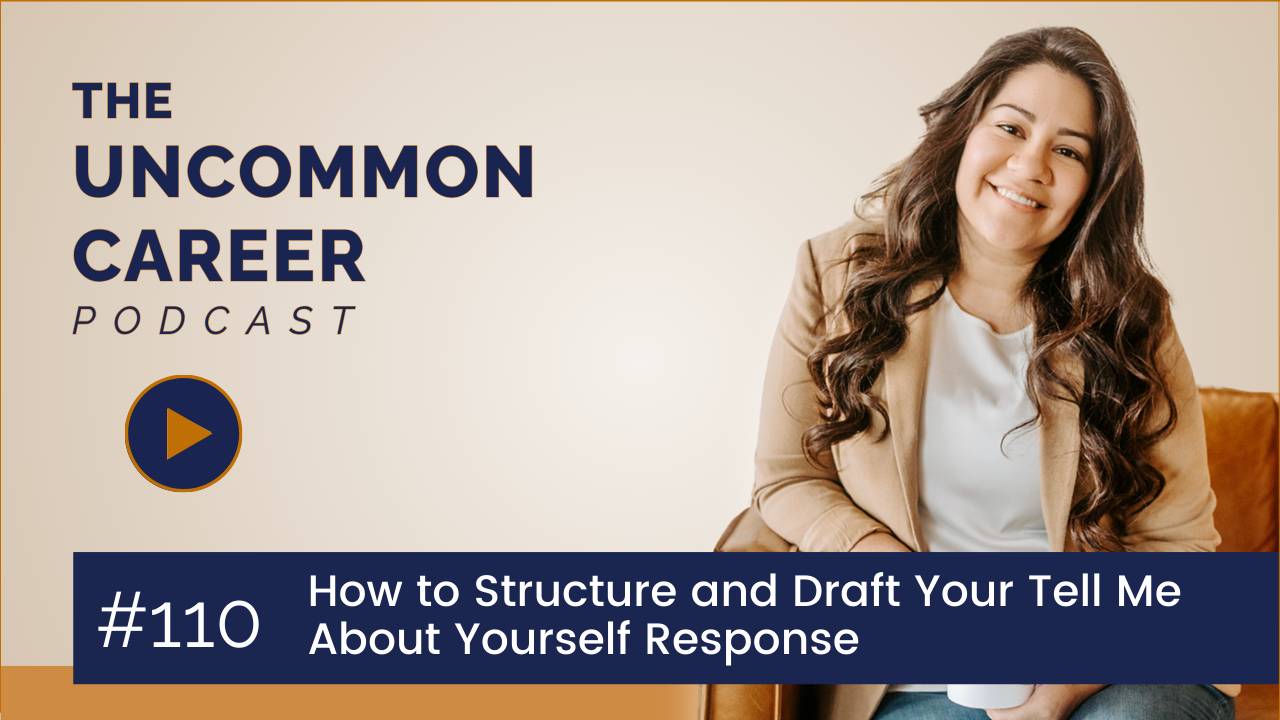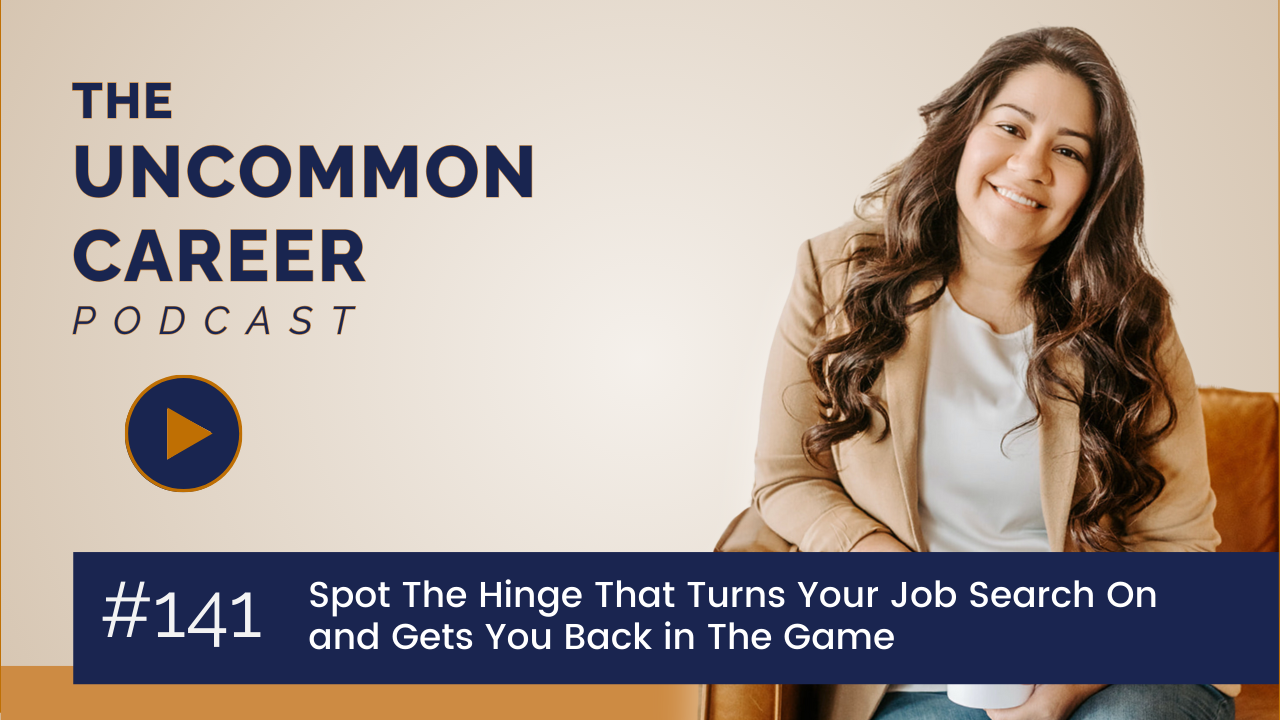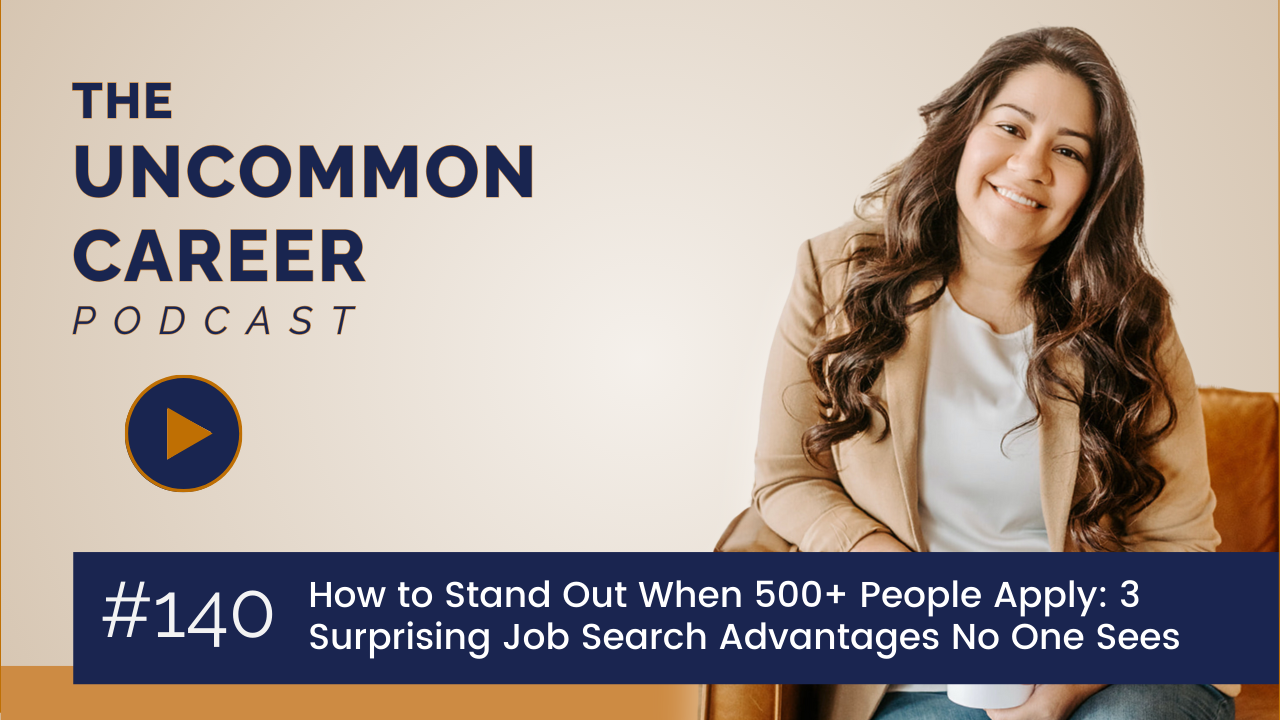110. How to Structure and Draft Your Tell Me About Yourself Response
May 06, 2025
How to Structure and Draft Your “Tell Me About Yourself” Interview Response
Strategy is essential—but structure is what transforms good ideas into a strong, polished interview response. This follow-up to the previous blog post breaks down the practical steps to draft and deliver a standout “Tell me about yourself” response that leaves a lasting impression.
Think of this as creating a movie trailer. It offers just enough to spark interest—highlights, tension, transformation—but not so much that it spoils the story. The goal is to provide just enough information to get the interviewer thinking, “Tell me more.”
Let’s walk through how to organize and write this key interview opener from start to finish.
|
Listen on your favorite podcast app: |
| |
For further details, listen to the previous complementary episode here
— #108: 3 Steps to Strategize Your "Tell Me About Yourself" Interview Response —
Step 1: Understand the Layers of Structure
There are two overlapping structures at play when crafting this response:
-
Chronological structure – Begin with the spark that led to the field, walk through growth, and end with why the current role is the natural next step.
-
Big-picture-to-detailed-to-big-picture – Start with a broad alignment statement, share accomplishments and career progression, then end with a strong summary that connects everything back to the target role.
Both formats ensure clarity while giving the interviewer a sense of purpose, direction, and intentionality.
Step 2: Open with a Name and a Spark
Always, always begin by stating your name clearly.
It reinforces your professional identity and adds to the touchpoints needed to make your name memorable.
Then, share the moment or experience that sparked interest in the role or field.
There are four common approaches to this:
-
A gradual build-up – “Throughout various roles, the part I loved most always came back to…”
-
Love at first sight – “The first time I saw this role in action, I knew it was for me…”
-
A childhood origin – “Ever since that lemonade stand at age seven…”
-
A recent realization – “After years in X, I took time to reflect, and realized I’m best positioned to thrive in Y…”
This brief story humanizes the candidate and shows authentic alignment with the role beyond salary or necessity.
It’s about connecting at a values level.
Step 3: Move into a Broad Overview
Before diving into the details, zoom out and provide a high-level summary:
-
Years of experience in the industry or function
-
Core themes of career contributions
-
The big-picture outcome delivered across roles
This positions the candidate as someone who doesn’t just complete tasks—but solves real, meaningful problems.
Step 4: Preview the Career Story (Not the Whole Resume)
Now comes the meat of the response. But this isn’t about listing every job held.
Think of this as a highlight reel—the preview, not the full film.
Select two to four roles that are:
-
Chronologically spread out (early, middle, most recent)
-
Aligned with the target role
-
Contain strong accomplishments or clear progression
For each, share only the most compelling hook:
-
A standout achievement
-
A high-impact metric
-
A challenge overcome
Phrasing examples:
-
“At Company X, I led a redesign initiative that reduced response time by 40%.”
-
“My time at Company Y taught me to streamline compliance processes, helping the team avoid a six-figure audit.”
These hooks signal readiness, results, and relevance—without overexplaining.
Step 5: Address Concerns Without Naming Them
Every candidate brings questions the interviewer may be quietly wondering about. Address them tactfully, without putting focus on the potential red flag.
Common examples:
-
Career gaps – “Over the past year, focus has been on upskilling and earning certifications in X and Y.”
-
Lateral moves or step downs – “Recent roles have prioritized work-life balance while deepening expertise in key areas.”
-
Age-related concerns – Demonstrate energy, adaptability, and future-focused intent through phrasing and tone.
Always frame experiences through value and action.
Let the story override any assumptions.
Step 6: Add the Encompassing Thought
Now, shift back to big picture. This is the “moral of the story”—a brief insight that ties everything together.
Depending on the background, this might be:
-
A cumulative metric (“Over the years, that’s amounted to $3M in sales revenue influenced.”)
-
A powerful outcome (“It’s led to consistent process improvements across every team supported.”)
-
A unifying theme (“Over time, I’ve become known as the person who brings structure to chaos.”)
This not only reinforces credibility but creates a memorable closing thought.
Step 7: Position Within the Company
Always finish by situating yourself in the company—not just near it. This helps the interviewer envision a future with you already in it.
Mention:
-
The team or department
-
A shared mission or value
-
The outcome being contributed toward
Example:
-
“Excited to bring this experience to the Strategic Ops team, and to contribute to building more efficient systems as the company scales.”
A well-positioned close frames the conversation as a continuation, not just a pitch.
Bonus: Make It Memorable with a “Tweetable Phrase”
Consider ending with a tagline or unifying message that summarizes professional identity.
-
“Known as the data whisperer who turns chaos into clarity.”
-
“The fixer for broken processes.”
-
“The person who makes hiring feel human again.”
It’s a small detail, but one that sticks.
In Conclusion...
This response sets the tone for everything that follows. It’s more than a biography—it’s a tailored introduction that makes the interviewer think, “This person gets it.”
Remember to:
-
Lead with intention
-
Guide with structure
-
Anchor with clarity
And above all, tell a version of the story that connects, compels, and confidently positions the next chapter.
The interview doesn’t begin after this response—it begins because of it.
So build it with care, and use it as the foundation for everything else to come.

Referenced Materials:
- Read & Listen to Episode #108 Here
- Download the Template: Draft Your Tell Me About Yourself Response
Complementary Episodes:












